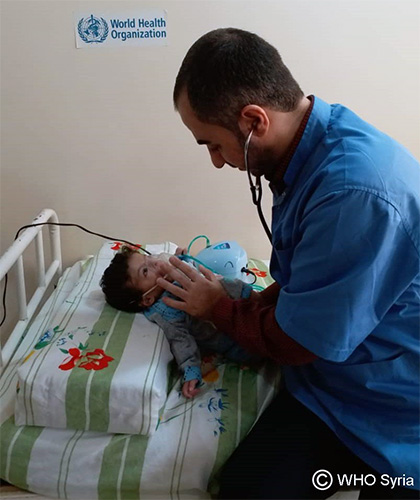The 2019 SMART survey revealed several pockets of emerging chronic and acute malnutrition. The survey confirmed that infant and young child feeding practices remained poor, with only 28.5% of mothers choosing early initiation of breast feeding. Similarly, only 18% of mothers exclusively breastfed their infants during the first six months of life. To date, 38 hospitals have been trained on the baby-friendly hospital initiative to increase the initiation of breastfeeding within the first hour of birth.
At the end of the year, the nutrition surveillance system consisted of a network of 827 health centres serving 980 000 beneficiaries. A total of 707 health facilities offered infant and young child feeding counselling, up from 592 in 2018. Three new stabilization centres for the treatment of SAM with medical complications were established in Aleppo, Al-Hasakeh and Ar-Raqqa, bringing the total number of centres supported by WHO to 25. In 2019, these centres treated 2145 children under the age of five, compared with 905 in 2018. The highest number of admissions was in Al-Hasakeh governorate (more than 650), reflecting the dire health status of children in Al-Hol camp who escaped ISIL’s last stronghold in early 2019. WHO is working with other UN agencies including UNICEF and WFP, both of which are supporting therapeutic and supplementary feeding programmes.
A total of 19 440 cases of global acute malnutrition (GAM) were detected and referred for treatment in 2019 (GAM means both severe acute and moderate acute malnutrition). The number of cases fluctuated only slightly compared with previous years. The 25 stabilization centres distributed across the country covered most needs but required regular support for nutrition therapeutic supplies, equipment and training of staff. Stabilization centres are still needed in Ar-Raqqa and Idleb.





